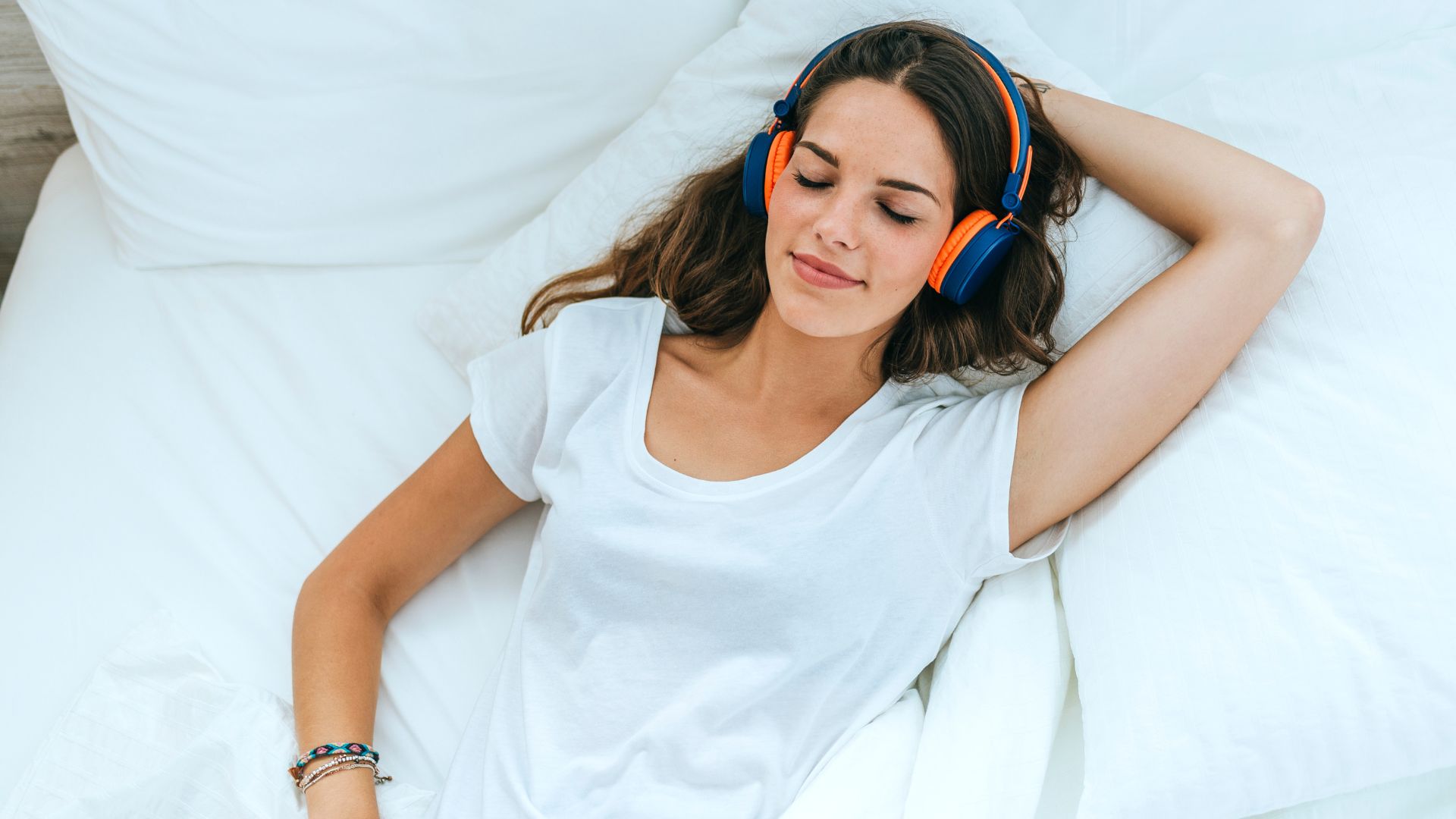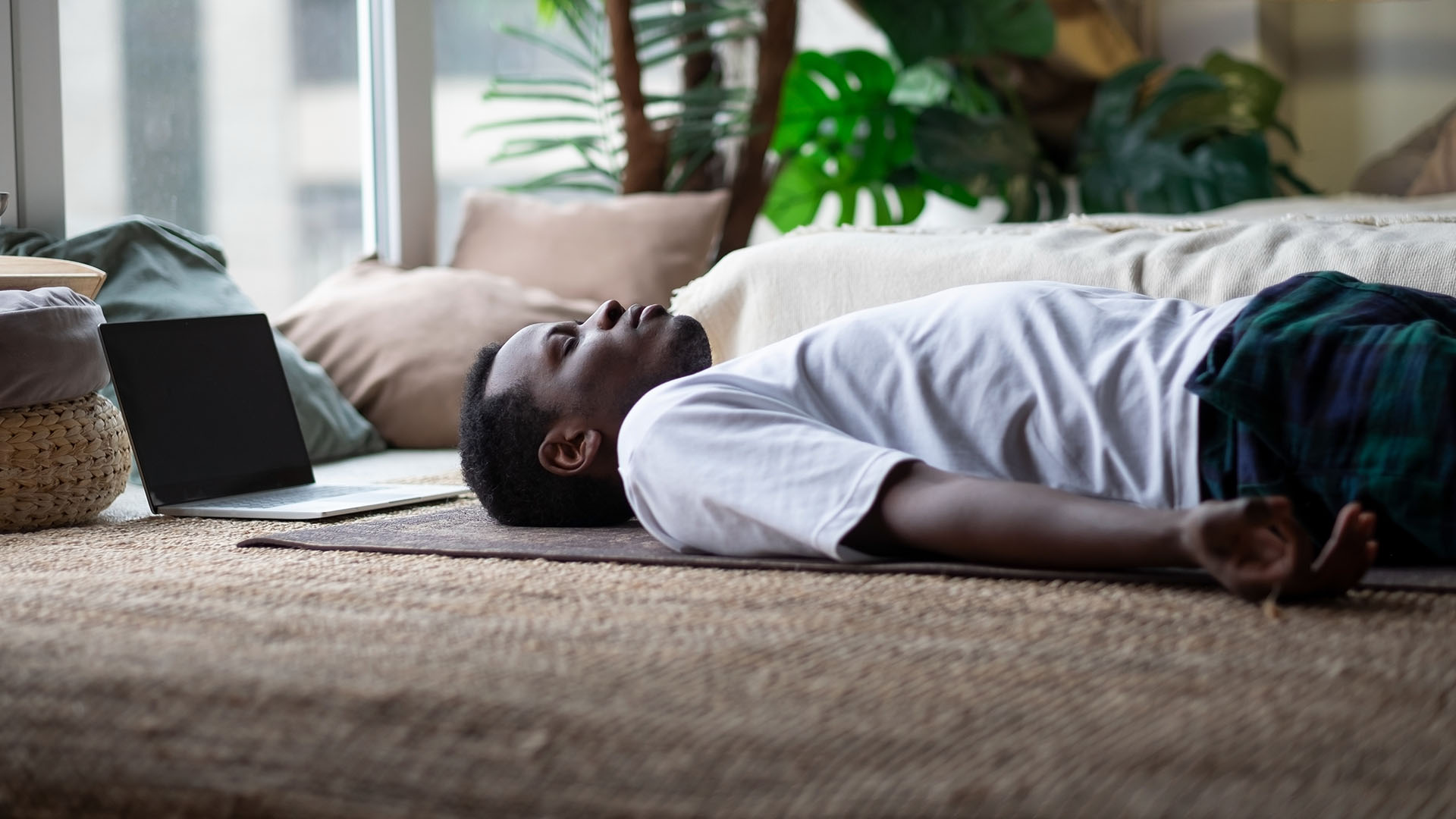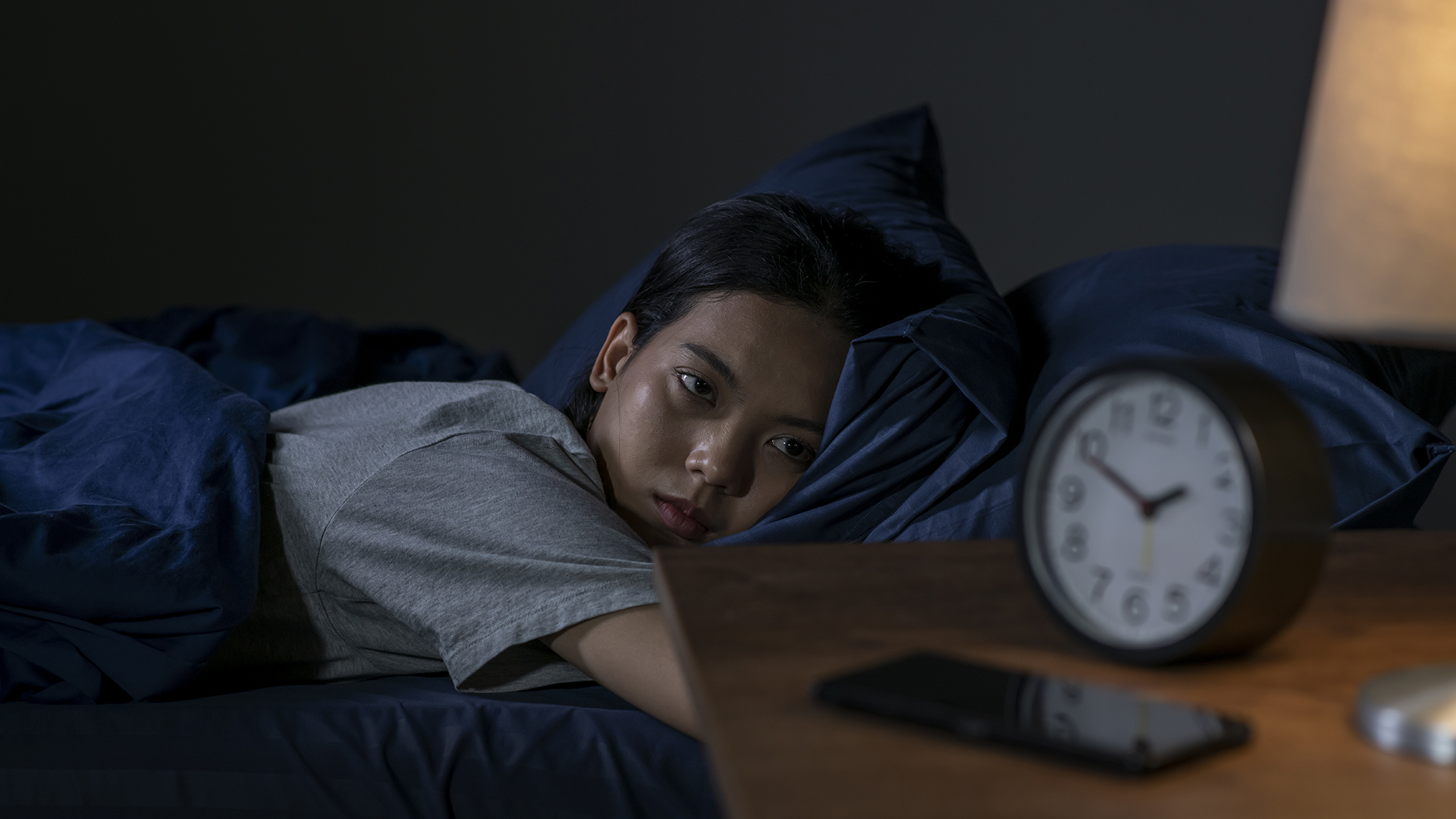What is green noise and can it help you fall asleep fast? An expert answers
Trouble falling asleep? This is why you should use green noise, not white

When you're struggling to fall asleep, creating the right background soundscape can help soothe racing thoughts and block disruptive noises. For many of us, white noise seems like the obvious sound solution. But should we be tuning into green noise for sleep instead?
White noise contains sounds from every frequency, resulting in a static effect similar to a wall of sound. Green noise, on other hand, is a filtered version of white noise. By emphasizing mid-range frequencies, green noise replicates the sounds we often hear in nature.
The organic sounds of green noise are associated with calm — just picture yourself relaxing by a babbling brook and you'll understand why. The hissing sound of white noise doesn't have quite the same soothing associations, but the blank canvas effect is particularly good at blocking disruptive sound.
There are many things we can do to optimize the bedroom for sleep, from investing in the best mattress for your budget and sleep style to donning an eye mask to block out ambient light. To better understand whether green noise or white noise is better for falling asleep, so we asked the experts. Here's what we learned...
What is green noise for sleep?
Green noise is a filtered version of white noise, but while white noise contains every type of sound frequency, green noise emphasizes those at mid-range. As there are fewer sharp high sounds, green noise doesn't have the 'harsh' tone that can accompany white noise.
Mid-frequency green noise is often expressed as nature sounds, hence the name 'green'. "Waves, rain on a window and birds singing, these sounds are all natural variations of green noise," explains Hannah Samuels, audiologist at Boots Hearingcare. "[It] is known as ‘nature’s lullaby’."

Mimicking the organic sounds humans have long associated with calming scenes, green noise is known for its relaxing effect. Examples of green noise include:
Get instant access to breaking news, the hottest reviews, great deals and helpful tips.
- Ocean waves
- A gentle running stream
- Soft rain
- Rustling leaves
- A distant waterfall
What is white noise for sleep?
Most of us are familiar with white noise in some shape or form. The term is often used to describe general background noise (like a particularly boring conversation) but 'white noise' actually refers to sound that blends all frequencies. The result is a static hum that's good at masking other noises.
All these frequencies coming together gives white noise something of a blank canvas effect, which is why it's often used to aid concentration. It acts like a privacy screen, effectively blocking other disruptions.

However, white noise does feature high frequency sounds often omitted from other forms of calming noise (such as green or pink noise). This gives white noise a 'hissing' effect, and some find it the harsher sound harder to relax around. Examples of white noise include:
- Television static
- A whirring fan
- A droning air conditioner
- A vacuum
Is green noise more effective for sleep than white noise?
“Sound is so important when curating the perfect atmosphere for any space," explains Hannah. This is particularly true in the bedroom, where sounds can both disrupt and assist falling asleep. While green noise and white noise help you sleep, they work better when used at different points in the sleep cycle.
Soothing green noise with it's calming properties is best used at the start of the night, as it eases racing thoughts by directing the mind to a peaceful place. As Catalin Zorzini, founder of Earth.fm says: "Green noise typically features less hissy and aggravated tones than its cousin, white noise. This makes it perfect for relaxing, as countless generations of ancestors had it as a reliable companion throughout their day."

The privacy screen of white noise, on the other hand, is best used during the night, as its sound blocking properties can help you stay asleep if you're otherwise prone to wake ups.
But Hannah adds that choosing the right noise type is also a matter of personal preference. "I would recommend trialling each one to understand which you find more relaxing for your needs.”
When to use green noise for sleep
The relaxing effect of green noise makes it an appealing background sound if overthinking tends to stop you from drifting off. “From soothing rainfall to lapping waves, nature sounds can help to enhance our ability to unwind, especially when they're at the gentler end of the scale," says Catalin.
Green noise can also assist in sleep meditation, or sleep visualization. Listening to your chosen green noise can help transport you to a calming space, away from the stresses and anxieties that might be disrupting your sleep.
Green noise can also be helpful if disruptive sounds from outside sources leave you tossing and turning. However, as green noise doesn't contain the same frequency mix as white noise, it's less effective at blocking out a range of sounds — you might find the occasional car horn sneaks through.

When to use white noise for sleep
We all wake up at points during the night, but most of us don't remember these mini disturbances. For others, however, these awakenings can become prolonged and lead to sleep deprivation. If you frequently wake up at night, white noise can be used to help you sleep through.
White noise is effective at masking sounds that can otherwise disrupt your rest, such as a noisy street or a loud household. Acting as a privacy screen, white noise masks these disturbances, so you can keep on snoozing. And as your brain learns to associate white noise with sleep, if you do wake up, you should find it easier to drift off with the static background buzzing calming you.
"White noise can be particularly effective for people experiencing tinnitus," Hannah explains. "It distracts the brain from the sound of tinnitus and makes it easier to tune out and fully relax.”
How to use green noise for sleep
It's easy to start using green noise for sleep, but it may take some experimenting to find the soundscape that's perfect for you. If you want to use green (or white) noise to help you drift off, here's how to get started:
Choose the type of green noise you want to listen to: There are plenty of places to find green noise for free, so play around to find a sound you like. YouTube has a large library of green noise videos, as do music streaming services such as Spotify. Meditation apps are also a good place to find soothing sounds.
Find the perfect volume: This might take some fine tuning, but volume is an important part of how effective green noise is. It needs to be loud enough to mask any disruptive noises but not so loud the sound itself becomes a disruption.
Introduce green noise into your nightly routine: Using green noise consistently as part of your bedtime routine will help reinforce the connection between the soothing sounds and falling asleep. In time, green noise can become a shorthand, alerting the brain it's time to get sleepy.

What are pink noise and brown noise?
White and green aren't the only colors on the noise spectrum. Pink noise and brown noise are both sound types that are often used to aid sleep. Like green noise, both pink and brown sounds are associated with nature
Hannah describes pink noise as having "deeper, lower sound waves" than the mid-range frequencies of green noise. "It is a lower frequency that can be considered more soothing, which is why it is sometimes also referred to as ambient noise. This is a great option for improving sleep and settling you down after a stressful day.”
“Brown noise goes even deeper - low frequencies are played at louder levels and the high frequencies at softer levels, producing bass-like rumblings that can be compared to waves crashing against the shore or a running river," says Hannah.
Alternatively, you could try listening to your favorite calming music tracks, the soothing sounds of a sleep meditation video, or even try out the unusual vibrations of sound therapy.
So when finding the perfect noise for sleep, consider what imagery calms you down when you can't sleep. Like a rumbling thunderstorm? Go for brown noise. Prefer rain against the window? Try pink or green. And if nothing relaxes you more than the sound of the vacuum cleaner, opt for white.

Ruth is an experienced Senior Staff writer at Tom’s Guide, covering all things sleep and mattresses. She writes to help people sleep better, from how-tos to the latest deals to mattress reviews, and has interviewed an array of experts who share her passion. She is also our specialist on memory foam — she’s flown around the world to see memory foam being made — and leads our hotel mattress content. She has a deep interest in the link between sleep and health, and has tried enough mattresses, from Helix to Nectar to Simba, to know the right bed really can make a difference to your wellbeing. Before joining the team at Tom’s Guide, Ruth worked as a sleep and mattress writer for our sister website, TechRadar.
